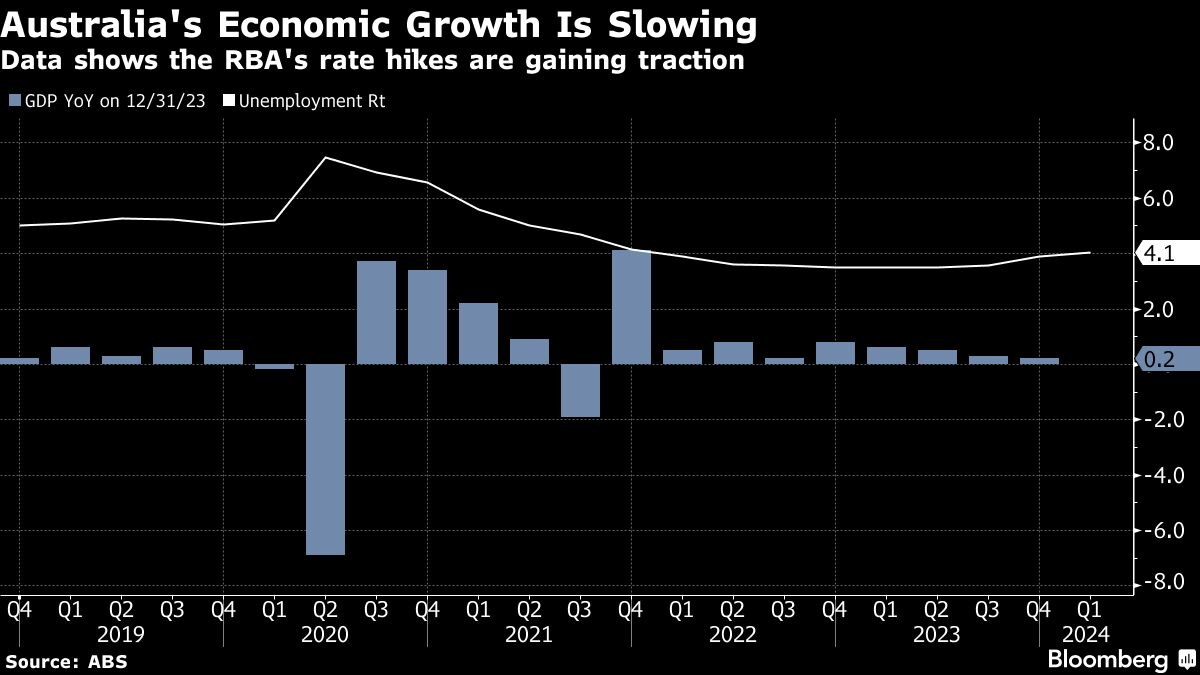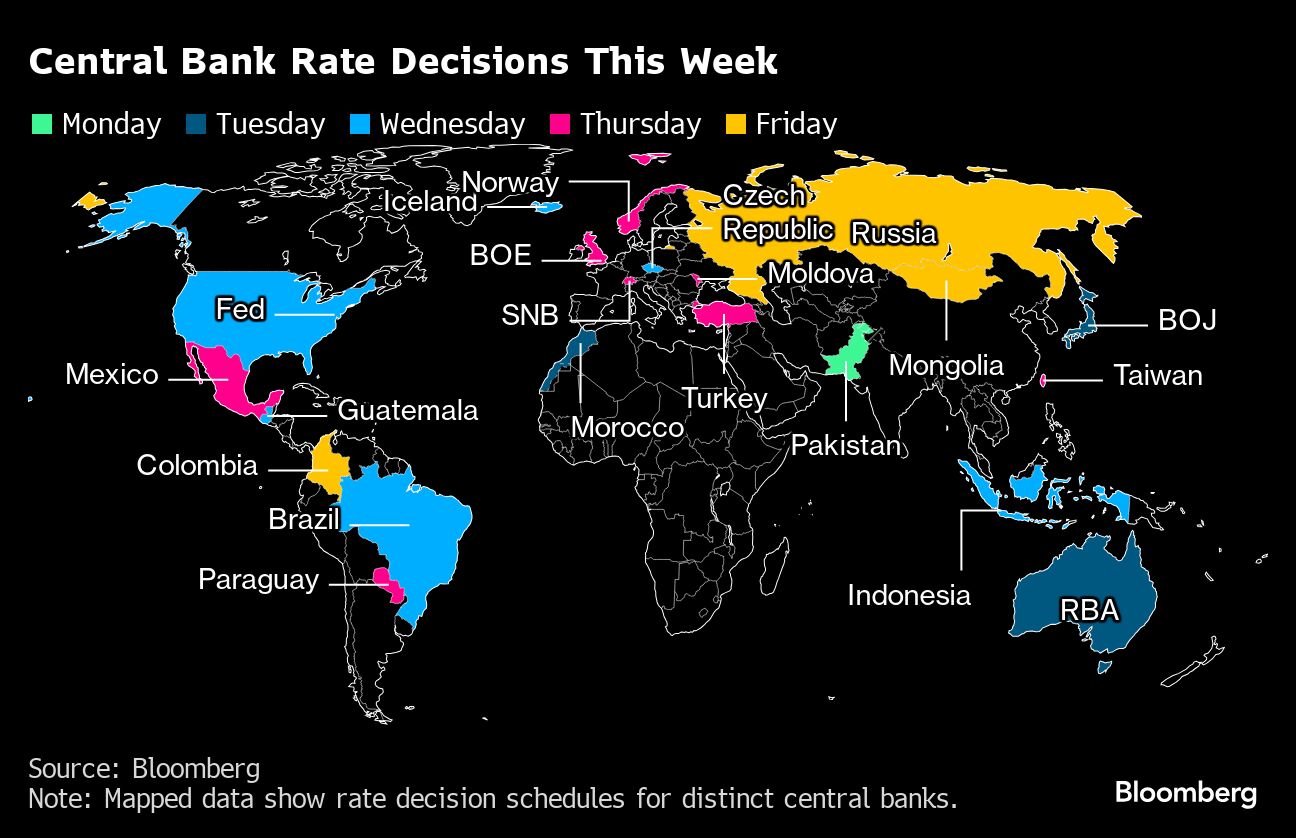RBA Keeps Key Rate at 12-year High of 4.35%
edgeinvest
Publish date: Wed, 20 Mar 2024, 05:50 PM
(March 19): Australia’s central bank signalled it may be done tightening monetary policy after leaving interest rates at a 12-year high, sparking a selloff in the currency and a rally in bonds.
The Reserve Bank of Australia (RBA) held its cash rate at 4.35% for a third straight meeting on Tuesday. Unlike previous months, the board made no reference to the possibility of further rate rises, signaling its tightening cycle may have ended.
“While recent data indicate that inflation is easing, it remains high,” the board said in a statement accompanying the decision. “The path of interest rates that will best ensure that inflation returns to target in a reasonable timeframe remains uncertain and the board is not ruling anything in or out.”
In response, the currency weakened to a two-week low of 65.32 US cents in Sydney and the policy-sensitive three-year government bond yield dropped to 3.67%. Australia’s equity benchmark extended its gain to a session high. All eyes now move to governor Michele Bullock’s press conference at 3.30pm in Sydney.
“The market is interpreting RBA’s forward statement as dovish, as the possibility of a rate hike seems to be lower now,” said Mingze Wu, a currency trader at Stonex Financial in Singapore. Still, given the lack of further signals, it’ll “take time and a tremendous shift” in policy for the Aussie to break out of its narrow 0.63-0.68 range, Wu added.
The post-meeting statement gave few clues on the potential timing of an easing cycle. Bullock has previously said the bank is in data-dependent mode and will only begin reducing rates once it’s confident inflation is on track to head sustainably back to the 2-3% target.
“The attention from markets has now turned to when the RBA will deliver its first cash rate cut,” said Sean Langcake, head of macroeconomic forecasting for Oxford Economics Australia. “The RBA will need a good deal of confidence inflation is headed back to the target range before it eases policy. We don’t expect the first rate cut until November.”
While the RBA doesn’t publish dot plots or its own forecast track for the cash rate, Bullock has suggested it won’t need to wait for inflation to be inside the band before cutting.
Rates traders reckon Australian policymakers will hold off on rate cuts until September. Australia’s central bank is expected to carry out as many as two quarter-point reductions this year, while the Federal Reserve is seen delivering up to three cuts.
The RBA’s on-hold call comes in a week that features the world’s biggest agglomeration of policy decisions to date in 2024, including announcements in the jurisdictions of six of the 10 most-traded currencies. The Bank of Japan raised its interest rate for the first time since 2007 and scrapped its yield-curve control policy shortly after Australia’s announcement. The US central bank concludes its meeting on Wednesday, when it’s expected to extend its pause.
The RBA has repeatedly pushed back against speculation about a near-term easing, reflecting its forecast that inflation will only return to target at the end of 2025. Economists, who broadly see a first rate cut in the second half of the year, had expected Tuesday’s statement to be hawkish as inflation remains sticky.
Data since the RBA’s February meeting has indicated a slowdown in the economy. While inflation is also cooling, worries remain that the impact of falling goods prices is coming to an end while services remain elevated. Retail sales have also slowed noticeably over the past year.
Australian Treasurer Jim Chalmers welcomed the RBA’s announcement in a comment in parliament.
“This decision is a reflection of the good progress that we are making as a country in the fight against inflation,” he said. “It gives us confidence that inflation is moderating in welcome and encouraging ways.”
Australia’s labour market is showing signs of loosening, although with unemployment at 4.1%, it’s still healthy. Jobs data for February will be released on Thursday. The resilience of employment has given policymakers optimism that they can engineer a soft landing — bringing down inflation while holding onto the enormous job gains of recent years.
On Friday, the RBA will publish its semi-annual financial stability report which will elaborate on the impact of rising borrowing costs on Australian banks, which have weathered the tightening cycle better than expected so far.
Source: TheEdge - 20 Mar 2024
More articles on CEO Morning Brief
Created by edgeinvest | Apr 26, 2024
Created by edgeinvest | Apr 26, 2024
Created by edgeinvest | Apr 26, 2024
Created by edgeinvest | Apr 26, 2024
Created by edgeinvest | Apr 26, 2024
Created by edgeinvest | Apr 26, 2024
Created by edgeinvest | Apr 26, 2024
















